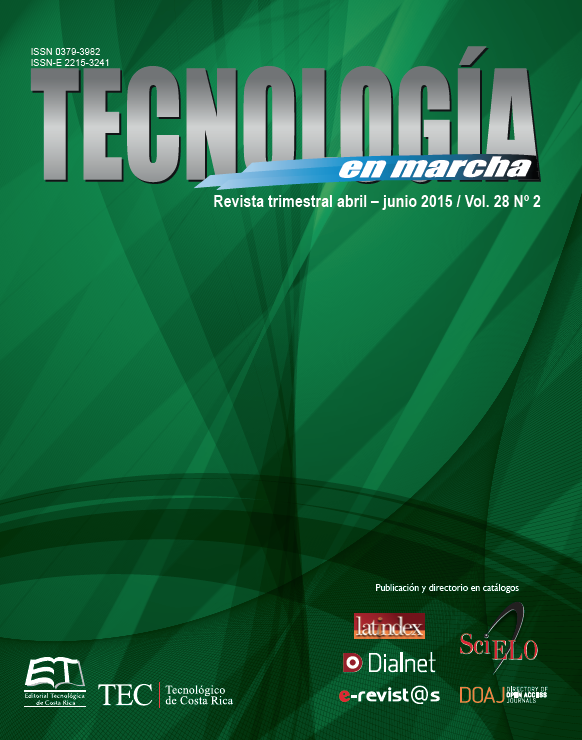Ecological study on chronic kidney disease and arsenic in drinking water in districts of Guanacaste
Main Article Content
Abstract
To analyze the association between arsenic-contaminated drinking water intake (total-As) above 10 ug/L and the Standardized Morbidity Index (SMI) for Chronic Kidney Disease (CKD) in the 59 districts of the province of Guanacaste, Costa Rica.
1600 sampling and analyses for total-As were performed on water from 421 aqueducts and population weighted averages were calculated in each of the 59 districts. SMI were established using the CKD hospital discharge data for the year 2012. Using the above variables, and through a descriptive and retrospective-analytical methodology, an ecological study was designed, in which a linear correlation was tested, (95% confidence level), between the weighted averages (total-As, ug/L) and the SMI for the 59 districts. On the other hand a tendency analysis was performed with exposure intervals for each zone. In addition, a descriptive analysis was done for the 17 districts with a statistically significant SMI considering population weighed averages for As-total exposure.
Total-As data show that among the 421 studied aqueducts, only 17 (4,00%) display concentrations above 10 ug/L, which are located in the districts of Cañas, Bebedero, Bagaces, and La Cruz. Results for SMI for CKD indicate that among the 59 districts, 33 (55,9%) had a SMI above “1,0”, in other words, the risk of disease por CKD was over the national average for the period of study. Statistical analyses indicate a simple correlation “r” of 0,41, which can be qualified as a medium-strength association between both variables, with a range of 0,33 and 0,66. Tendency analysis, according to the exposure intervals for As-total, show an irregular behavior within intervals 4 and 5, where the “medium-exposure” range, resulting from a weighted average between 11 and 20 ug/L, has a SMI for CKD higher than the “high-exposure” interval, which is higher than 20 ug/L total-As. In the descriptive analysis for the 17 districts with statistically significant SMI, some districts with a population-weighted average of total-As below 3 ug/L, but with a very high SMI for CKD, such as Nosara, Nacascolo, Diriá, Sámara, Palmira and Filadelfia.
Conclusions: even though the tendency analysis shows there is an increased risk of illness as exposure augments up to the exposure range, individual comparison of the population-weighted averages for total-As and the SMI for CKD of the 17 districts; it is evident that some districts that were not exposed to total –As have a high SMI for CKD, such as Mansión, Sámara, Hojancha and Palmira. The same situation is also seen for the very low exposure category, such as Liberia, Nicoya, Nacascolo, Nosara, San Antonio, Santa Crur, 27 de Abril and Diriá. This suggests that total-As contaminated water, in the districts of Guanacaste, probably is not a common risk factor in the zones affected by the CKD epidemic.
Recommendations: cross sectional and case/control studies should be done, without neglecting any hypothesis regarding the common risk factors in the CKD affected districts, including exposure to pesticides, high temperature, heavy metals (including total-As in drinking water) agrochemicals, agricultural occupation, among others.
Article Details
Los autores conservan los derechos de autor y ceden a la revista el derecho de la primera publicación y pueda editarlo, reproducirlo, distribuirlo, exhibirlo y comunicarlo en el país y en el extranjero mediante medios impresos y electrónicos. Asimismo, asumen el compromiso sobre cualquier litigio o reclamación relacionada con derechos de propiedad intelectual, exonerando de responsabilidad a la Editorial Tecnológica de Costa Rica. Además, se establece que los autores pueden realizar otros acuerdos contractuales independientes y adicionales para la distribución no exclusiva de la versión del artículo publicado en esta revista (p. ej., incluirlo en un repositorio institucional o publicarlo en un libro) siempre que indiquen claramente que el trabajo se publicó por primera vez en esta revista.

